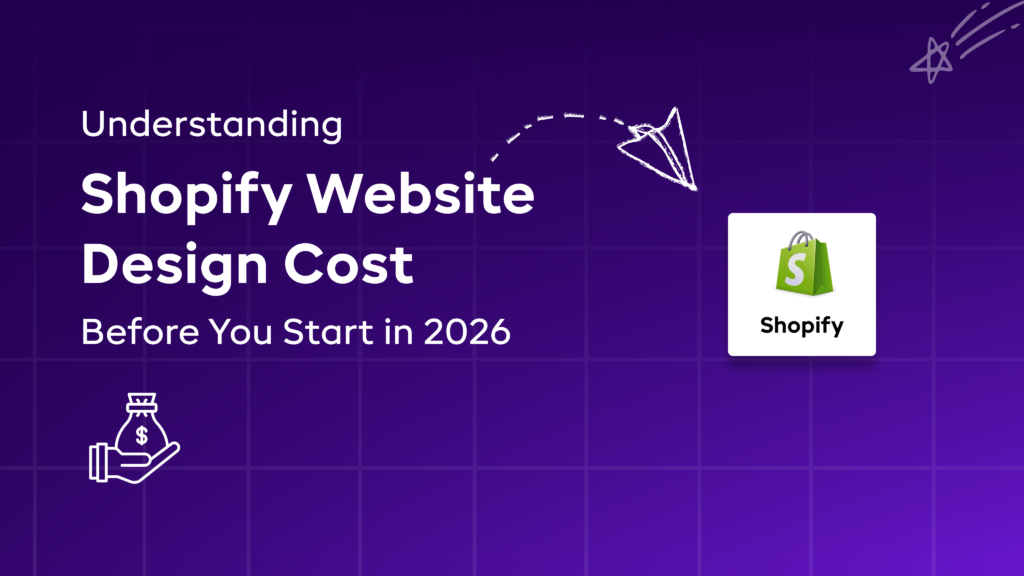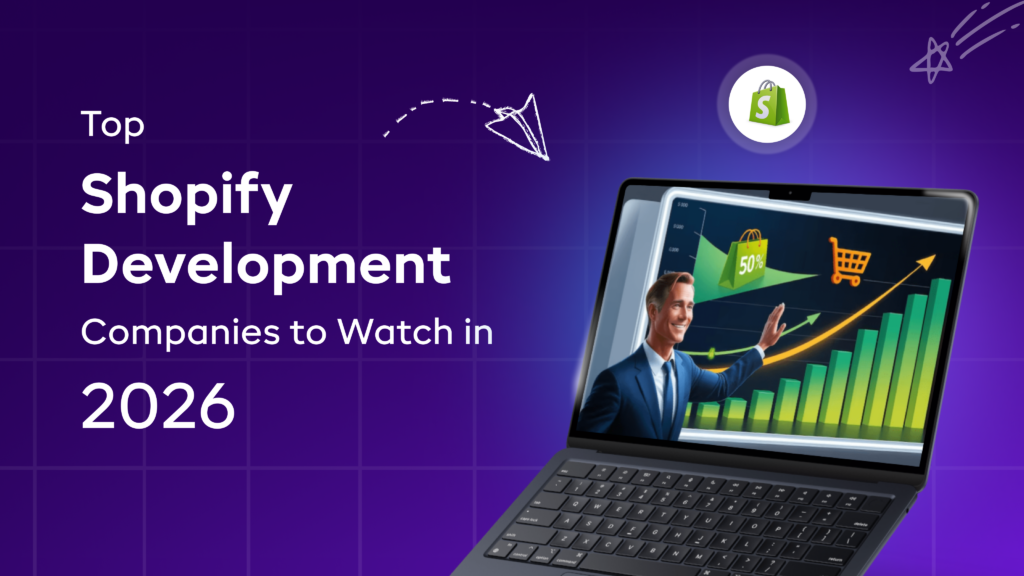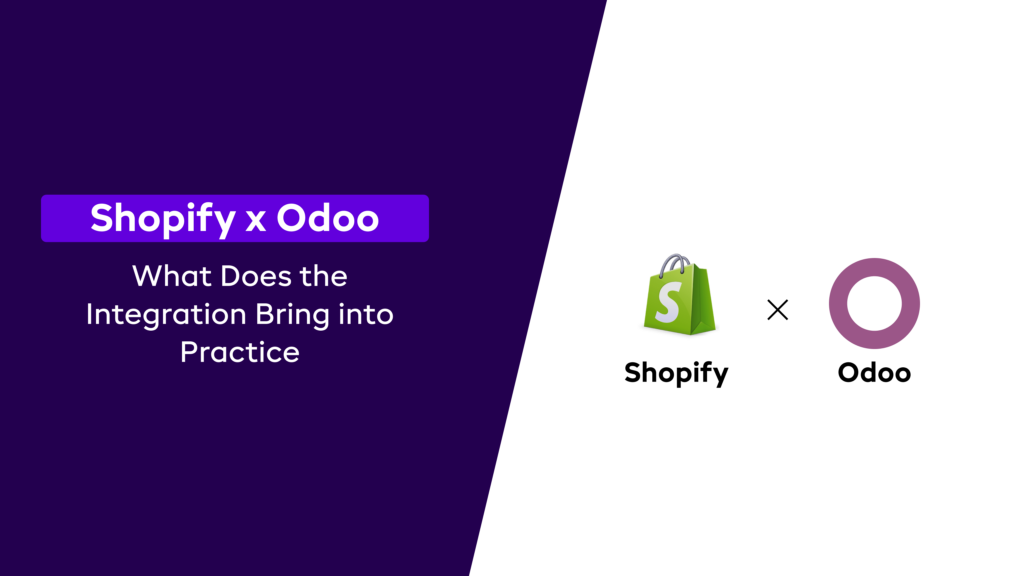Understanding Shopify Website Design Cost Before You Start in 2026
Published on November 5th 2025

Introduction
Shopify has made selling easy. But designing for conversions? Not so much.
In 2026, Shopify still owns the eCommerce space. Every tool you need is there: hosting, payments, analytics, ready to launch your store in hours. But here’s the catch: the platform is simple; the success isn’t.
Ask five different agencies for a quote and you’ll get five wildly different numbers. One says $500, another says $15,000, and both insist they’re right. That’s where most founders get stuck, wondering what exactly they’re paying for.
Truth is, the cost isn’t random. It shifts with how your brand plans to grow, and with the level of customization, integrations, speed, and user experience you actually need.
This guide breaks down those moving parts.
No jargon, no inflated promises, just context. So you can stop guessing what “Shopify design” costs and start understanding what your store really needs.
The Real Cost of Shopify Website Design: It’s More Than Just the Theme
A lot of people think Shopify design ends with buying a theme. It doesn’t. That’s just the beginning; what happens underneath is where the real cost lives.
1. Theme (Custom or Pre-built)
A theme is a good start for many brands. Pre-built ones help you go live quickly, but they’re designed to fit every brand and aren't limited to your store. However, the moment you want the homepage to look a little different, or a product grid to behave in a specific way, you’ve entered development territory.
When you opt for development, the cost increases from a few dollars to a few hundred dollars. Developers spend hours adjusting code so that what you see on desktop also looks right on mobile, and that small “tweak” you imagined often becomes a mini-project of its own.
2. Branding & UX Design
Branding isn’t dropping a logo on a banner and calling it done. It’s about how people feel when they scroll. Colors, fonts, tone: everything plays into trust. UX design ensures that a shopper doesn’t get lost halfway through checkout or wait too long for an image to load.
Good UX quietly guides people to buy. Bad UX quietly sends them away. That difference is invisible until you see it in your sales data. Besides, creating the perfect UI/UX requires significant research and budget.
3. Development & Integrations
Behind every Shopify site is a backend of complex systems that need to talk to connect together. From payments to shipping and inventory, or even a CRM. Each one adds a small layer of complexity. When something breaks, fixing it takes time and experience.
Smooth integration feels effortless to customers, but it’s the part that usually takes up most of the development hours. So, yes, a theme gets you started. But a working, reliable Shopify store is where the real investments are made.
4. Apps, Plugins & Maintenance
Shopify stores offer several apps that enhance your shopping experience. However, having too many of them could slow down your operations. Therefore, it’s essential to regularly test and update your systems to keep things fast and secure.
Pricing isn’t random; it scales with your ambition. A small apparel shop might thrive on a $2k setup. A global D2C brand? They’ll invest more because every interaction, language, and pixel matters.
Here’s a simple example: A Basic Apparel Store vs. a Multi-Region D2C Brand.
A small apparel store might need a simple theme, a few product pages, and a quick, affordable payment setup.
Now compare that with a multi-region D2C brand: localized content, multiple currencies, warehouse integrations, and custom checkout flows.
Same platform, completely different scope, and that’s where the custom Shopify website design cost jumps from a few thousand to a full-scale investment.
Key Factors That Influence Shopify Website Design Cost
You don’t spend money on Shopify on a whim; everything is structured. Basically, your bills depend on the size of your store, the apps you use, and the number of integrations.
Here are the key factors that influence Shopify website design cost:
#1 Theme Selection: Free, Paid, or Custom?
A Free Themes:A great option for a startup. They’re free, convenient, and easy to use. However, they don’t offer customization, which gives your store a look similar to many competitors'.
B Paid Themes: Paid themes (costing around $200–$500) give a standard approach to your shop. They offer an optimized experience with standard UI/UX design, more sections, and a streamlined experience. It’s a great option for startups looking to scale without attracting additional costs.
C Custom Options: Custom themes (costs between $2,000–$10,000+) give your Shopify store a unique experience. They are designed from scratch and scale along with your business. They also include best practices for converting customers into sales.
Remember, a theme is your storefront shell, not your sales engine. The real conversions come from how it’s designed, not just which theme you pick.
#2 Store Complexity & Functionality
Every new feature requires your developers to work on the code. For example:
- Variants, bundles, and advanced filters require your team to add a new line of code.
- When you plan to launch subscriptions or custom checkouts within your store, it will require more coding and testing.
- Similarly, if you need to sign up for multiple languages and currencies, you’d require a complete setup within the store.
A simple apparel store might launch in weeks. Add personalization, loyalty programs, or multi-region rules; it’ll take months to implement. Each function adds cost, but also long-term scalability.
#3 UX/UI Design Customization
Good UX isn’t decoration, it’s what keeps users moving through the funnel. Wireframes, prototypes, and responsive layouts all take time, but they save you from drop-offs later. However, given the basic Shopify themes and UI/UX, you’d need to hire a team of professionals to design from scratch.
Hiring such professionals would require you to pay by the hour or hire experts on a monthly retainer. Add heatmaps or user-session tracking, and you’ll see exactly where customers stop clicking. That data makes future redesigns cheaper and smarter.
#4 App Integrations & Add-ons
Apps keep Shopify flexible, from reviews and loyalty programs to shipping automation and analytics. Most cost between $10 and $200 per month.
The catch? Too many apps can slow down the site. When that happens, custom integrations or private apps are better; more control, less bloat. Choose carefully, and build only what you really need.
#5 Content & Visual Assets
This is where brands often underestimate the cost of Shopify website design. Good photography, crisp videos, and real copywriting set professional stores apart from “dropshipping” stores.
AI tools now help design faster: product mockups, automated image edits, even content suggestions.
They cut costs, but human input still wins when you need depth and authenticity. Use AI for volume, not for voice.
#6 The Team or Partner You Choose
Who you hire changes everything! Freelancers are quick and affordable but may struggle to scale. Agencies bring diverse expertise—but at Uncanny, we go a step further.
As certified Shopify Experts, we blend creativity with structure to build custom themes and scalable stores that align with your business goals.
On Shopify, pricing reflects ambition, complexity, and experience. When design, tech, and strategy align, every dollar delivers more.
2026 Pricing Snapshot: What Different Shopify Design Packages Look Like
Ever wondered how much does it cost to design a Shopify website? Let’s take a closer look with this table:
| Type of Store | Features | Estimated Cost (USD) | Timeline |
|---|---|---|---|
| Starter / MVP | Pre-built theme, basic branding, single payment setup | $500–$1,500 | 2–4 weeks |
| Growth-Ready | Custom UX, 5–10 pages, integrations for payments, shipping, CRM | $3,000–$7,000 | 4–8 weeks |
| Enterprise / Scale-Up | Full custom design, automation, multi-region setup, team training | $10,000+ | 8–16 weeks |
There’s no such thing as a one-size-fits-all price in Shopify design.
Each store’s cost depends on its scalability: the number of products, the depth of customization, the user experience, and the level of automation you want.
A startup selling five products doesn’t need the same muscle as a global D2C brand juggling currencies, languages, and complex fulfillment.
The trick is finding balance. Spend where it impacts user flow and conversion, not where it only looks good.
Uncanny Insight:
“We’ve seen founders spend less upfront and pay more later: not in cash, but in conversion losses.”
A clean, optimized store pays for itself faster than a cheap one that bleeds customers quietly over time.
Scale Smarter with a Shopify Store Built for Growth
Whether you’re just starting or ready to go global, our Shopify design process scales with you—fast, functional, and future-ready.
Talk to a Shopify Expert
Common Hidden Costs You Might Miss
Most Shopify builds go over budget. They don’t do this because the design was overpriced, but because the “small stuff” got missed early.
Here are some common hidden mistakes you might miss during the store design:
App Subscription Renewals: You start with free trials. A few months later, renewal emails start coming ($20 here, $50 there), and suddenly your “light tech stack” costs a few hundred a month.
Shopify Plan Upgrades: Growth comes fast. Transaction volume jumps, new features are needed, and the plan you began with no longer fits. Moving from Basic to Advanced can double monthly costs.
Payment Gateway Fees: Every sale chips away a small fee. It might seem like a minor cost for convenience, but it might soon pile up as sales increase.
Data Migration & API Customizations: Moving your existing data or integrating with third-party systems takes longer than the timeline indicates. These small tweaks add to the timeline.
Ongoing SEO & Speed Optimization: A site can have the best UI/UX and still load slowly. Regular optimization helps you maintain your traffic and sales.
Maintenance Retainers: After you open your store, you need someone to maintain it. Many owners skip retainers and wind up paying more when their store is slow.
Example from the real world
A mid-size fashion firm saved money by not testing its products before putting them on sale. Slow load times cost them 20% of their organic traffic and hundreds of dollars in lost sales within a few months.
Sometimes, you have to pay later to save early.
DIY vs. Professional Shopify Design: Is it Worth It in 2026?
It’s never been easier to build a Shopify store.
With AI tools like Shopify Magic and generative layout builders, you can spin up pages in hours that used to take weeks. For startups testing an idea or a side hustle, that’s more convenient.
But here’s where the line appears. AI can design layouts. It helps you optimize your pages by placing buttons, cropping images, and optimizing the logo. It understands your brand story, understands customer insights, and decrypts patterns.
That’s where professional design earns its keep.
Humans notice the subtle things: tone, flow, and story. They know how to align UX with credibility and build experiences that feel branded, not just built.
Here’s a quick tabular presentation of DIY Vs. Professional Shopify Design:
| Factor | DIY Setup | Professional Design & Development |
|---|---|---|
| Upfront Cost | Low at the start: you’re mostly paying for a theme and a few apps. | Higher investment, but pricing usually includes design, setup, and launch support. |
| Timeline | Expect long weekends. Trial and error takes time, especially when learning Shopify. | Streamlined. Agencies and developers already know what works and can go live faster. |
| Design Quality | Theme-based look; functional but generic. You’ll share the same layout as hundreds of other stores. | Tailored visuals, brand-specific layout, and consistent styling across pages. |
| Customization | Limited by the theme’s flexibility, too many edits can break the layout or slow down the site. | Full creative control: custom code, animations, advanced product logic, and mobile refinement. |
| UI/UX | Often cluttered or inconsistent because design choices are driven by templates. | Built around real customer journeys and data-driven UX decisions. |
| Support & Maintenance | You fix things yourself or rely on community forums. | Ongoing support, updates, and troubleshooting handled by experts. |
| Long-term Value | Lower initial spend but higher maintenance time and risk. | Higher start cost but long-term stability, scalability, and brand credibility. |
If you’re running a growing store or planning to scale, the value isn’t just in pixels: it’s in how those pixels make people stay.
Uncanny Insight
“In 2026, AI can design your website, but it can’t design your brand’s credibility.”
That difference is what separates a store that exists from one that sells.
How to Set Your Shopify Design Budget (Without Guesswork)
Most people guess their Shopify budget. That’s where it goes wrong. Design isn’t about spending more; it’s about knowing what to spend on.
Step 1: Define what success means:
More sales? Better retention? Figure that out first. If you don’t, every cost will feel random later.
Step 2: Think traffic and scale:
A store getting a few hundred visits a month doesn’t need heavy custom work. But if you’re aiming big (multi-currency, fast checkout, regional setups), you’ll need more muscle.
Step 3: Put 30–40% of your launch budget into design and UX:
That’s the range most healthy stores sit in. It gives space for visuals, experience, and polish without cutting corners.
Step 4: Add your recurring costs early:
Hosting, apps, updates; they creep in. Better to plan for them now than patch them later.
Example:
If your first-year sales target is $50K, set aside $5K–$7K for design and development. That ratio works; tested and safe.
Step 5: Keep a small buffer:
Shopify rolls out upgrades constantly. You’ll want room for tweaks and new features. You’ll thank yourself later.
No big formula here. Just simple math and clear priorities; that’s how smart founders budget.
The ROI Perspective: What a Good Shopify Design Actually Gives You
A Shopify store isn’t just about looks. It’s your sales engine, the part customers actually feel. When it’s designed right, it quietly makes money every single day.
1. Conversion Lift
Good design isn’t art; it’s science. Every button, layout, and image drives a micro-decision. When those pieces line up, conversions jump. We’ve seen stores double AOV by cleaning up the flow and removing friction points.
2. Better Mobile UX
Most shoppers now buy from their phones. A messy mobile experience kills intent fast. Smooth navigation, quick checkout, and bigger touch targets- that’s what saves the sale. Small UX wins often mean big profit jumps.
3. SEO and Speed
Search engines reward speed. A site that loads in under two seconds wins both clicks and trust. Smart code and compressed visuals do more for SEO than another round of keywords ever could.
4. Easier Scale-Up
When the backend’s clean, scaling doesn’t break the design. You can plug in Shopify POS, social commerce, or B2B layers without rebuilding everything. That’s where proper architecture pays off.
Uncanny Insight:
“A great Shopify design doesn’t just ‘look’ good; it pays for itself every quarter.”
That’s the part people forget: design is marketing that never sleeps.
How Uncanny Approaches Shopify Website Design (Our Playbook)
We don’t start with colors or code. We start with clarity: what the brand needs to sell and who it’s speaking to. Everything else builds from there.
Discovery Workshops
These aren’t presentations; they’re working sessions. We map goals, audiences, and what success actually means before touching design.
UX Prototyping Before Code
You see your store before it’s built: wireframes, flows, clickable screens. It saves rounds of guesswork later.
Performance-First Design
Speed, conversions, accessibility, those come first. The best designs are invisible because they just work.
Transparent Costs
You’ll always know what’s being done and why. No vague “customization” lines or surprise add-ons.
Micro-Case Example
One D2C fashion brand came to us with a beautiful but slow store. We rebuilt it using modular layouts. That single shift cut redesign costs by 25% and lifted conversions 40% in three months.
That’s not luck; it’s process. It’s what happens when design follows logic, not ego.
Final Thoughts: Don’t Start with Price - Start with Purpose
Too many Shopify builds begin with a number. That’s the wrong starting line.
The goal isn’t to find the cheapest option; it’s to build something that earns back what you put in.
A store that loads fast, feels natural to use, and keeps people coming back, that’s not an expense. That’s equity in your brand.
When you design with purpose, every pixel has a reason. You start seeing fewer redesigns, better data, and steadier growth. That’s when design stops being visual and starts being valuable.
So now that you know “How much does a Shopify website cost?”, are you ready to have the professionals design it?
Book a Call with our experts to learn more about the design cost and implications today!
FAQs
Q. How much does a Shopify website cost in 2026?
Basic stores can start around $800–$1,500 using ready themes. A full custom design with branding, UX, and backend integrations often lands between $3,000 and $10,000, depending on complexity and region.
Q. Why do two Shopify stores cost so differently?
Pricing changes with design depth, number of products, required integrations, and level of customization. A store using heavy apps or a tailored UX takes more development hours than a simple catalog setup.
Q. Is it cheaper to use a pre-built Shopify theme?
Yes, at first. But once you begin altering layouts or adding special functions, customization time increases. The theme cost stays small; the real expense is the development behind those changes.
Q. Do I still need a designer if I buy a premium theme?
Usually, yes. A designer refines branding, spacing, typography, and flow so your store feels cohesive and on-brand, rather than looking like a slightly edited template hundreds of others already use.
Q. What hidden costs should I expect?
Beyond design, plan for app subscriptions, maintenance, speed optimization, and possible content support. These smaller monthly expenses often determine whether your site continues to perform well long after launch.

About Author


